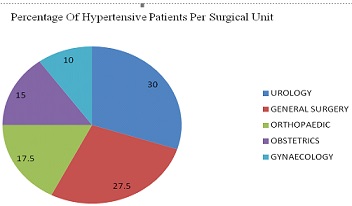Anaesthesia for Emergency Surgical Patients with Co-existing Hypertension: A Clinical Challenge
Mots-clés :
Anaesthesia, Emergency, Hypertension, Surgical patientRésumé
Background: Hypertension is a medical condition that may co-exist with any surgical disease. Hypertension is defined as a sustained increase in blood pressure (BP) >140/90 mm Hg in a patient not taking antihypertensive drugs. It has been estimated that the overall prevalence of hypertension in Nigeria is 28.9%. Hypertension becomes a challenge to the anaesthetist when the hypertensive patient presents for an emergency operation.
Methodology: This study was a retrospective audit review of anaesthetic charts, case notes and operation records of adult patients that were operated at the accident and emergency (A&E) theatre of a tertiary hospital in the North-West zone of Nigeria over a 6 months period during 2014. Patient's age, sex, type of surgery and anaesthetic technique were collated. Data obtained were expressed as numbers and percentages.
Results: A total of 182 adult patients had emergency surgery. Females were 95(52.2%). General surgery had the highest number (38.5%) of patients followed by Obstetrics with 32.4%. Gynaecological surgery had the lowest number of patients (5.5%). Forty (22%) of patients operated during the period had high blood pressure (>140/90mmHg). Twelve of the hypertensive patients (30%) had urological operations followed by general surgical procedures with 11 patients (27.5%). Four patients (10%) had gynaecological surgery. General anaesthesia (GA) was administered in 80% of the cases while the remaining 8 patients had spinal anaesthesia.
Conclusion: Twenty two percent of study patients were hypertensive and most of them had urological or general surgical procedures. GA was the preferred technique of anaesthesia during the review period.

Téléchargements
Publiée
Licence
(c) Copyright SY Yakubu, II Lawal, ST Mohammad, ME Idris, AT Bako 2021

Ce travail est disponible sous licence Creative Commons Attribution - Partage dans les Mêmes Conditions 4.0 International.




